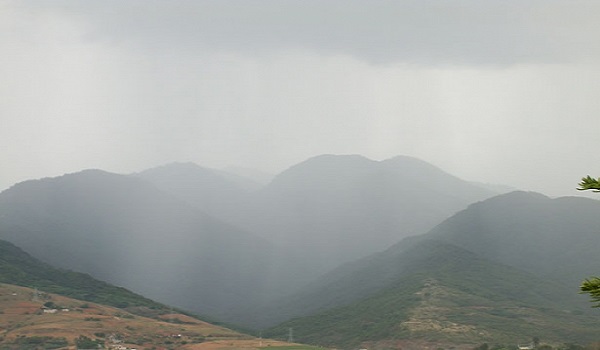Scientists may have solved a long-standing enigma known as the African Humid Period – an intense increase in cumulative rainfall in parts of Africa that began after a long dry spell following the end of the last ice age and lasting nearly 10,000 years.
In a new study published this week in Science, an international research team linked the increase in rainfall in two regions of Africa thousands of years ago to an increase in greenhouse gas concentrations. The study was funded by the National Science Foundation and the U.S. Department of Energy.
The findings are critical, researchers say, because they provide new evidence that increases in carbon dioxide and other greenhouse gases could have a significant impact on the future climate of Africa.
“This study is important not only because it explains a long-standing puzzle, but it helps to validate model predictions of how rising greenhouse gas concentrations might change rainfall patterns in a highly populated and vulnerable part of the world,” said Peter Clark, an Oregon State University paleoclimatologist and co-author on the study.
The study was led by the National Center for Atmospheric Research (NCAR). It used computer simulations and analysis of geologic records of past climate.
The researchers focused on the era following the last ice age. When ice sheets covering North America and northern Europe began retreating after the last glacial maximum some 21,000 years ago, there was a long dry spell in central Africa that lasted until about 14,700 years ago, when rainfall increased abruptly. Scientists have long been puzzled by the regime shift, which turned deserts into grasslands and earned the African Humid Period moniker.
Rainfall actually increased in two separate regions of Africa – one north of the equator, the other south. Some previous studies had suggested that the shift may have been triggered by changes in the Earth’s orbit, but lead author Bette Otto-Bliesner said orbital patterns alone could not explain increased rainfall of that extent in both regions.
As the Earth emerged from the ice age, atmospheric levels of carbon dioxide and methane increased significantly – almost to pre-industrial levels – by 11,000 years ago. As the planet continued warming, ice sheets melted and the influx of fresh water from North America and northern Europe began weakening the Atlantic Meridional Overturning Circulation, which brings warm water up from the tropics and keeps Europe temperate.
This weakening of the Atlantic ocean current simultaneously moved precipitation southward toward the southernmost part of Africa, and suppressed rainfall in east Africa and northern equatorial Africa during the long dry spell, the researchers say.
When the ice sheets stopped melting, the circulation strengthened and brought precipitation back to the north. This change, coupled with the orbital shift and warming of both the atmosphere and oceans by greenhouse gases, triggered the African Humid Period.
“This study provides yet another demonstration of the sensitivity of the Earth’s climate to small changes in atmospheric greenhouse gases,” said Clark, a professor in OSU’s College of Earth, Ocean, and Atmospheric Sciences.
The science team recreated records of past moisture conditions by examining fossils, former lake levels and other geologic data, and simulated past climate with a power climate model developed by NCAR.
”The future impact of greenhouse gases on rainfall in Africa is a critical socioeconomic issue,” Otto-Bliesner said. “Africa’s climate seems destined to change, with far-reaching implications for water resources and agriculture in ways that may generate new conflicts.”
The study focused on the Sahel region of Africa to the north, including Niger, Chad and northern Nigeria; and the southeastern equatorial region of Africa, including the Democratic Republic of Congo, Rwanda, Burundi, Tanzania and Kenya.
References:
Story Source: Science study links greenhouse gases to African rainfall — written by Mark Floyd, Oregon State University, December 04th, 2014
Publication: B. L. Otto-Bliesner, J. M. Russell, P. U. Clark, Z. Liu, J. T. Overpeck, B. Konecky, P. deMenocal, S. E. Nicholson, F. He, Z. Lu. Coherent changes of southeastern equatorial and northern African rainfall during the last deglaciation. Science, 2014; 346 (6214): 1223 DOI: 10.1126/science.1259531















Comments